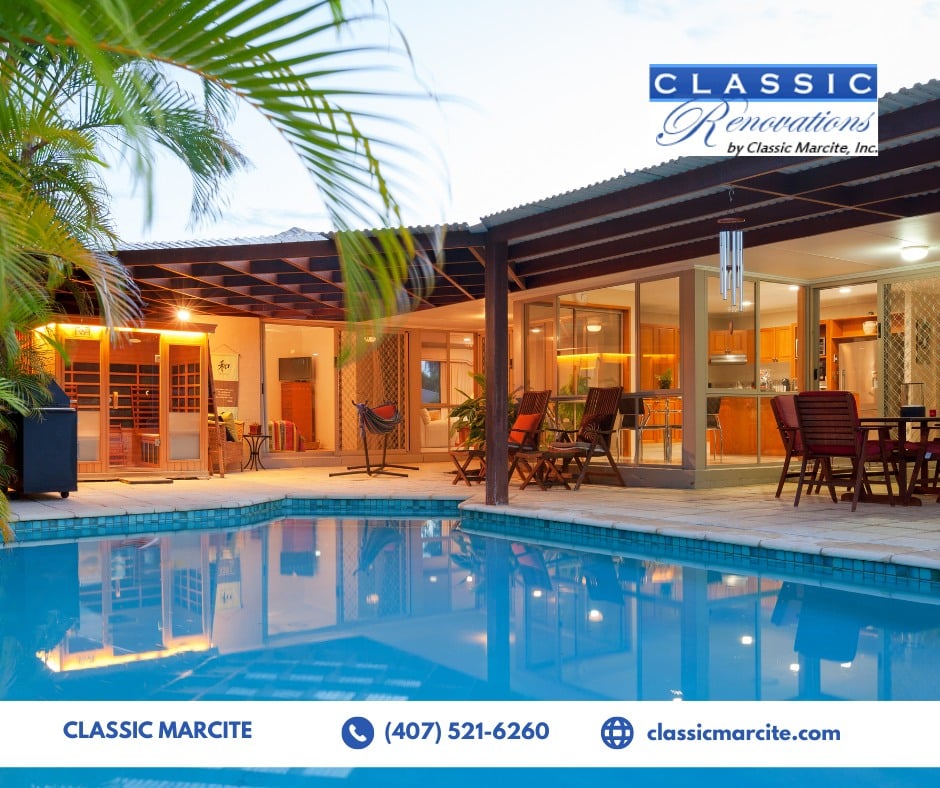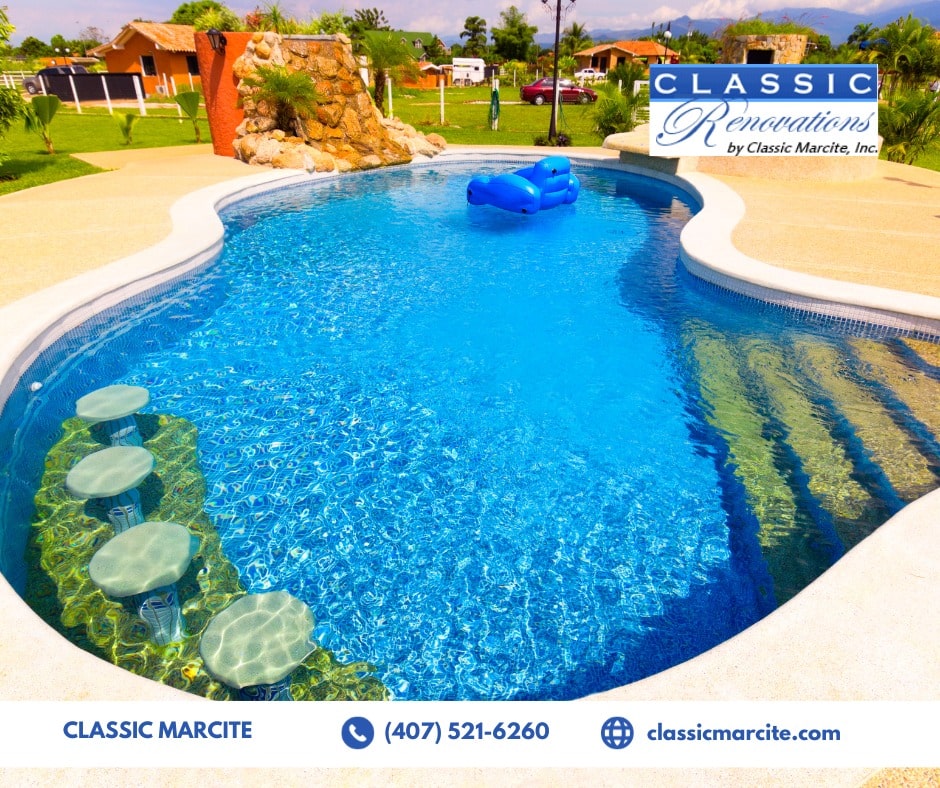Refurbishing your pool is more than just a cosmetic upgrade; it’s a crucial process to ensure the safety, functionality, and longevity of your investment. For many pool owners, the idea of refurbishing their pool may seem daunting, but with the right approach and expert guidance, it can transform your backyard oasis into a modern, efficient, and visually appealing retreat. In this comprehensive guide, we will delve into what refurbishing your pool really means, covering every aspect from the initial assessment to the final touches, ensuring your pool remains a valuable asset to your property.

The Basics of Pool Refurbishment
Refurbishing your pool involves a series of processes aimed at restoring and enhancing its overall condition. This typically includes repairing or replacing the pool’s surface, updating equipment, fixing leaks, and adding new features to improve both functionality and aesthetics. By understanding each step of the refurbishment process, you can make informed decisions that align with your budget and long-term goals.
Key Aspects of Pool Refurbishment:
-
Surface Resurfacing: One of the most common reasons for refurbishing a pool is to address a deteriorating surface. Over time, the pool’s surface can become rough, stained, or cracked, necessitating resurfacing. This process involves draining the pool, removing the old surface, and applying a new finish such as plaster, pebble, or tile.
-
Equipment Upgrades: Refurbishing your pool is also an excellent opportunity to upgrade outdated or inefficient equipment. This might include replacing old pumps, filters, heaters, and automation systems with modern, energy-efficient models that can significantly reduce your pool’s operating costs.
-
Leak Repairs: Leaks are a common issue in older pools and can lead to water loss, increased chemical usage, and damage to surrounding structures. Detecting and repairing leaks early during the refurbishment process can prevent more extensive and costly repairs down the line.
-
Aesthetic Enhancements: Pool refurbishment is not just about fixing what’s broken; it’s also about enhancing the overall look and feel of your pool. This could involve adding new features such as waterfalls, lighting, or even a complete redesign of the pool’s shape and landscaping.

Benefits of Pool Refurbishment:
- Enhanced Safety: Refurbishing your pool ensures that it meets current safety standards, reducing the risk of accidents and injuries.
- Improved Aesthetics: A refurbished pool can significantly boost the visual appeal of your backyard, making it a more inviting space for relaxation and entertainment.
- Increased Property Value: A well-maintained and modernized pool can add substantial value to your property, making it a worthwhile investment.
The Resurfacing Process
Resurfacing is a critical component of pool refurbishment, and it involves several key steps to ensure a durable and attractive finish. Classic Marcite, a leader in pool resurfacing and renovation, offers a range of materials and finishes to suit different preferences and budgets.
Steps in the Resurfacing Process:
-
Inspection: Before any work begins, a thorough inspection of the pool is conducted to assess the condition of the existing surface and identify any underlying issues such as leaks or structural damage.
-
Draining the Pool: The first physical step in the resurfacing process is to drain the pool completely. This allows the contractors to work on a dry surface, ensuring better adhesion of the new material.
-
Surface Preparation: The old surface is then removed, which may involve chipping away the existing plaster, sandblasting, or using other methods to create a clean, rough surface for the new material to adhere to.
-
Applying the New Surface: Depending on the chosen finish—whether it’s plaster, pebble, tile, or an alternative—the new material is carefully applied, ensuring an even, smooth coating. This step requires precision and expertise to achieve a high-quality result.
-
Curing and Filling: Once the new surface is applied, it needs time to cure properly. After curing, the pool is slowly refilled with water, and the chemical balance is adjusted to protect the new surface and ensure optimal water quality.

Material Options for Resurfacing:
- Plaster: A popular and economical choice, plaster provides a smooth, classic finish and is available in various colors.
- Pebble: Known for its durability and natural appearance, pebble finishes are made from small stones embedded in cement, offering a textured look and feel.
- Tile: Tile finishes are luxurious and long-lasting, offering endless design possibilities with a wide range of colors, patterns, and materials.
Cost Considerations in Pool Refurbishment
Refurbishing your pool is an investment, and understanding the cost factors involved can help you plan your budget effectively. Several variables influence the total cost, including the size of your pool, the materials used, and the extent of the refurbishment.
Factors Affecting Refurbishment Costs:
- Pool Size: Larger pools require more materials and labor, leading to higher costs.
- Material Choice: The type of surface finish you choose will significantly impact the overall cost. For example, tile is generally more expensive than plaster.
- Extent of Repairs: The more extensive the refurbishment, the higher the cost. This includes repairs to leaks, structural issues, or significant equipment upgrades.
Budgeting Tips:
- Get Multiple Quotes: It’s essential to obtain quotes from several contractors to compare prices and services.
- Plan for Contingencies: Set aside a portion of your budget for unexpected repairs or upgrades that may arise during the refurbishment process.
- Prioritize: If budget constraints are a concern, prioritize the most critical repairs and upgrades first, such as leak repairs or equipment replacement.

Choosing the Right Contractor
Selecting the right contractor is crucial to the success of your pool refurbishment. A reputable contractor will ensure that the work is done to a high standard, on time, and within budget.
Key Considerations When Choosing a Contractor:
- Experience: Look for a contractor with extensive experience in pool refurbishment, particularly with the type of surface finish you’re considering.
- Licensing and Insurance: Ensure that the contractor is licensed and insured, which protects you in case of accidents or damage during the refurbishment.
- Customer Reviews: Check online reviews and ask for references from previous clients to gauge the contractor’s reputation and the quality of their work.
- Warranty: A good contractor will offer a warranty on their workmanship and the materials used, providing peace of mind that your investment is protected.
Why Choose Classic Marcite:
- Proven Expertise: With over 30 years of experience and more than 100,000 pools resurfaced, Classic Marcite is a trusted name in pool refurbishment.
- Quality Craftsmanship: As the largest Pebble Tec® applicator in Central Florida, Classic Marcite ensures top-quality finishes that stand the test of time.
- Personalized Service: Being a family-owned business, Classic Marcite prides itself on delivering personalized service tailored to each client’s unique needs.
Maintaining Your Refurbished Pool
After investing in a pool refurbishment, it’s essential to maintain your pool properly to ensure its longevity and keep it looking its best. Regular maintenance not only protects your investment but also ensures a safe and enjoyable swimming environment.
Essential Maintenance Tips:
- Regular Cleaning: Keep your pool clean by skimming the surface, brushing the walls, and vacuuming the floor regularly. This prevents debris buildup and helps maintain the integrity of the surface finish.
- Chemical Balance: Proper chemical balance is crucial for preserving the pool surface and ensuring water quality. Test the water regularly and adjust the chemical levels as needed.
- Seasonal Care: Depending on your location, your pool may require different maintenance routines during different seasons. For instance, in warmer climates, you may need to run your pool pump longer to prevent algae growth.
- Professional Inspections: Schedule regular inspections with a pool professional to check for any signs of wear or damage, ensuring that any issues are addressed before they become major problems.
Specific Maintenance for Different Finishes:
- Plaster: Avoid using abrasive cleaning tools that can scratch the plaster surface. Regularly check and maintain the water’s pH level to prevent etching.
- Pebble: Pebble finishes are highly durable, but it’s essential to keep the water chemistry balanced to avoid discoloration.
- Tile: Tile surfaces require regular grout cleaning to prevent staining and buildup. Use a gentle brush and a pool-safe cleaning solution for best results.
FAQs About Pool Refurbishment
Q1: How often should I refurbish my pool?
- Most pools require refurbishment every 10-15 years, depending on usage, maintenance, and the type of surface finish.
Q2: Can I change the shape of my pool during refurbishment?
- Yes, changing the shape of your pool is possible, but it involves more extensive construction work and higher costs.
Q3: What are the signs that my pool needs refurbishment?
- Common signs include cracks, rough surfaces, frequent leaks, and outdated equipment. If your pool is showing any of these symptoms, it may be time to consider refurbishment.
Q4: How long does the pool refurbishment process take?
- The timeframe varies depending on the extent of the work, but most refurbishments take between 2 to 4 weeks to complete.
Q5: Will refurbishing my pool increase my property value?
- Yes, a well-maintained and modernized pool can significantly enhance your property’s value and appeal.
Q6: Can I use my pool during the refurbishment process?
- No, the pool needs to be drained and will be out of service until the refurbishment is complete.

